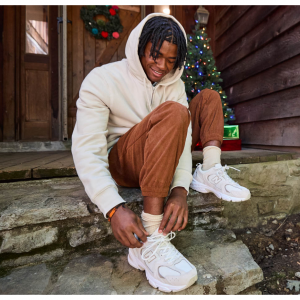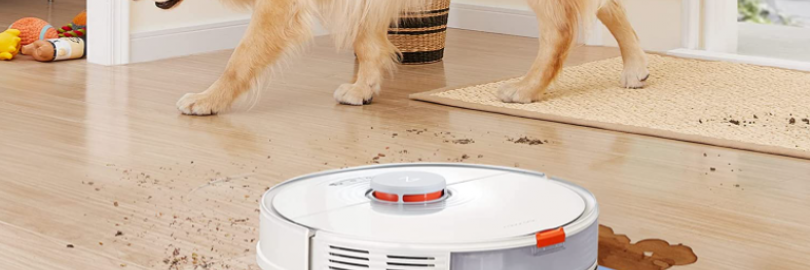
iRobot Roomba i7+ vs. Shark IQ vs. Roborock S7: Detailed Comparison, Which is the Best?
Our Recommended Robot Vacuums
Choosing the best robot vacuum for your home can be a daunting task. You need to know the features of each make and model to get the best value for your money.
While robot vacuums may look very similar, they each have their pros and cons that give them a leg up on the competition.
In this comparison and review, we'll take a look at the differences between the iRobot Roomba i7 vs the Roborock S7 vs the Shark IQ and see which of them can be crowned the king of modern robotic vacuums.
#1.
Roborock S7
Best robot vacuum/mop hybrid
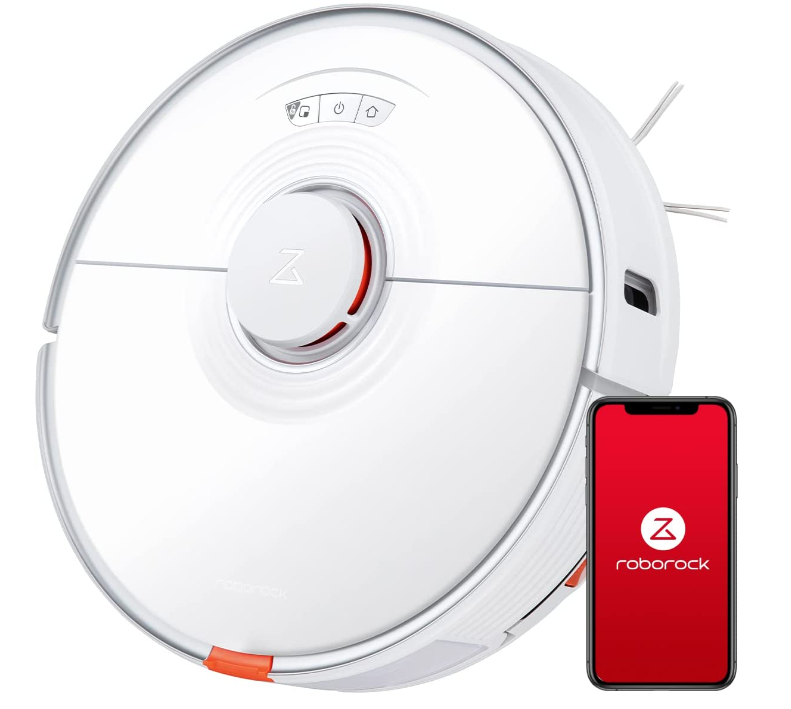
Pros
Accurate carpet detection
Fast mapping
Auto-raising mop works well
Cons
Dividing spaces in app can be glitchy
Mop pad can catch on area rugs
Review
The S7 is the first device we truly trust to vacuum and mop the floor without close supervision. That's because the S7 is smart enough to know when it's on a rug and can lift its mop pad so your rug doesn't get soaked.
As a vacuum cleaner, the S7 is excellent—it's not the best for pet hair—but it's quick and thorough, with an average pickup score of 93. It worked better on hard floors than carpet, but even on carpet the performance was decent, with an average score of just over 90.
It also has details such as multi-layer mapping, exclusion zones, and scheduling. If you're looking for a robot vacuum that can mop floors, the Roborock S7 is worth a look.
#2.
iRobot Roomba i7+
Roomba's original self-emptying robot vacuum
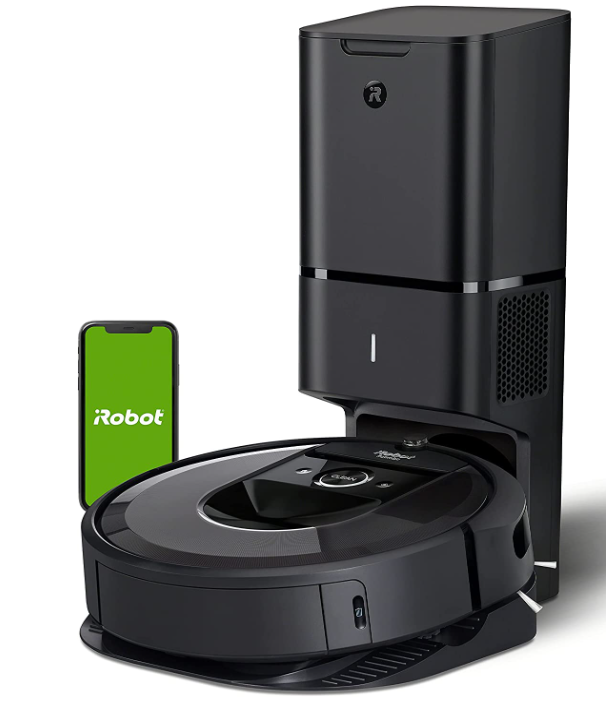
Pros
Low profile means it fits easily under furniture
Supereasy setup
Self-emptying bin
Cons
Gets stuck easily on unfavorable surfaces
Review
It has a base with its own bin so you can do multiple cleanings without emptying the bin. In our pet hair test, it beat the Shark Ion R85, picking up more than 90 percent of fur on hard floors and carpets.
The Roomba i7+ is also fast, with a clean run in less than 20 minutes.
It's also slightly lower than the average we tested, with a reading of 62.6dB.
It has many other features, such as the ability to map multiple floors and create virtual walls.
Now that iRobot has released the Roomba s9+, the Roomba i7+ has dropped in price but is still just as effective at cleaning.
#3.
Shark RV1001AE IQ Robot Vacuum
Best Budget Option
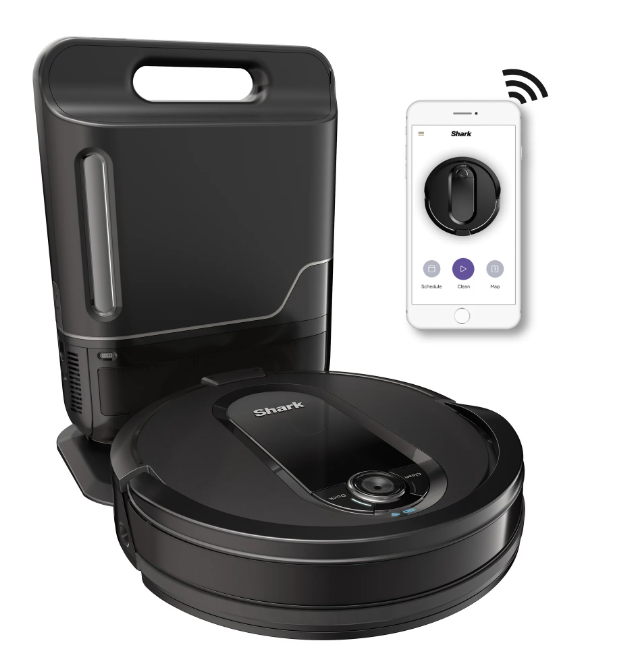
Pros
Self-emptying bin is efficient
Premium looks
Snake-like cleaning pattern ensures fuller coverage
Cons
Took three test units to complete floor map
Difficult map creation in app
Lackluster cleaning performance
Review
You've probably seen ads for this robot vacuum, which claims it has powerful suction, self-emptying, and a brush that rarely needs cleaning. It's all true. Overall, the Shark IQ R101AE is about $300 cheaper than many of its top competitors. However, our tests showed it was a little rough around the edges. While it offers smart features and advanced navigation, we found them a little frustrating to use at times.
IQ is the cheapest self-emptying robot vacuum on the market. Its cleaning power is on par with top competitors like the iRobot Roomba i7+. These facts alone are worth considering.
Roborock S7 vs. iRobot Roomba i7+ vs. Shark IQ:
price and availability
The Roborock S7 was released on March 24, 2021, and is available at Amazon for $649 and Walmart.com for $649. It's currently available in white and black. There's also the option to buy a compatible Auto-Empty Dock either as a set or independently. On its own, the dock costs $299 from Amazon.
If you prefer a more traditional robot vacuum, the company’s Roomba i7 base model is priced at $699. If offers all of the features of the i7+, apart from automatic dirt disposal, but you can upgrade the internal bin and charging station at a later date for $299.
Today, we’re looking at the $649 Roomba i7+, which includes the enhanced charging station and automatic dirt disposal feature.
The Shark IQ RV1001AE is listed at $599, but is currently available for $404 at Amazon.
This price includes the self-emptying base. If you want to purchase it without the self-emptying base, the Shark IQ has a list price of $449, and costs $349 on Amazon.
However, the model that comes with the self-emptying base has a much smaller dustbin — just 0.17 quarts, versus a 0.6-quart dustbin on the other model. It's also worth checking our Shark promo codes to see if you can save on a purchase direct from the manufacturer.
Roborock S7 vs. iRobot Roomba i7+ vs. Shark IQ:
design
Roborock S7 design
At first glance, the Roborock S7 could be mistaken for the Roborock S6 MaxV, minus the model's dual front-facing cameras. Both vacuums measure 13.9 inches by 13.8 inches and are 3.8 inches tall, which is quite large compared to robot vacuums. Neither can fit through dining room chair legs like a small robot like the 13.3-inch Roomba i7+.
However, the S7 looks more elegant than its siblings and the Roomba i7+. It's wrapped in shiny white plastic with brushed silver trim on top, and a raised center disc with the Roborock logo and hiding the lidar sensor. Silver buttons for spot cleaning, power/start-up cleaning and docking are placed near the front. A bright orange button on the rear releases the onboard water tank.
While its looks aren't revolutionary, the Roborock S7 has some design flair that gives the robot a premium look and hints at power under the hood.
There are concentric "ripples" that spread outward from the logo disc - a subtle nod to the machine's sonic vibrating mop. Just like the iRobot Roomba s9, there is a curved light that moves and changes color when the robot is in motion. While much smaller than the lights on the Roomba s9, in normal vacuum mode, the white light is amplified from left to right. In Spot Clean Mode, it changes from green to blue and back again.
Those premium touches continue on the underside of the Roborock S7, with red, studded, rubber-finned brush rollers sitting between two large black rubber wheels. The company calls it a floating brush, and says it's able to get closer to the ground for better cleaning. The brush housing moves easily without feeling flimsy. A five-spoke brush with rubber bristles is located to the left of the brush roller. A set of sensors are placed around the edge, including one that detects the carpet near the front omni wheels.
The Wi-Fi indicator and trash can are hidden under a thin plastic cover. The bin is easily removable for emptying and can be washed under running water. It's completely separate from the tank, which means you don't need to manually close the tank's litter box to change cleaning modes.
Unlike other hybrid models that only drag microfiber pads, Roborock equips the S7 with a sonic mopping system that offers multiple scrubbing settings via a removable half-moon mopping floor and reusable microfiber pads.
But here's an extra nifty feature: the mop section automatically raises 5mm (0.197 inches) when it detects a rug or the robot returns to the dock. The company calls it VibraRise technology, but I'm impressed that it actually works consistently.
iRobot Roomba i7+ design
It's wrapped in premium-looking black plastic with a charcoal grey top and a wide black bumper up front. The logo at the top hides a carry handle above a prominent center "clean" button. Smaller icons for docking and spot cleaning are placed to the left and right of it.
These buttons are integrated into the vacuum cleaner itself and record pushes with minimal feedback. It's a smart design that prevents dust from getting into the button mechanism and causing problems down the road.
At 3.7 inches tall, the Roomba i7+ is the same height as its sibling, the Roomba 690, but taller than the 3.4-inch Shark Ion. It's not quite as tall as the towering 3.9-inch Neato Botvac D7 Connected. With the exception of a low-clearance sofa, the i7+ moved easily under our furniture.
At 13.3 inches in diameter, the i7+ is a bit larger than the 13.2-inch D-shaped Botvac D7. The Roomba i7+ is only 0.3 inches larger than the 13-inch Roomba 690, but significantly larger than the 12.9-inch RoboVac 11s. The i7+'s size doesn't prevent it from cleaning around chair legs, as the robot can maneuver nimbly in tight areas.
Flip the Roomba i7+ over and you'll find two rubber wheels and a small roller on the front and center. Instead of bristles and rubber rollers like most other robot vacuums, the i7+ uses rubber-wrapped foam. Two rubber rollers have a herringbone pattern to direct dirt to the vacuum chamber. The first roller has deep V-shaped fins, while the second roller reverses the chevron pattern, with the lighter fins inlaid with rubber dashes, presumably to catch smaller pieces.
The three-spoke side brush spins in front of the right wheel. Floor-tracking sensors sit on the opposite side, quietly mapping your surroundings.
The bin on the Roomba i7+ pops up, but if you opt for the $250 Clean Base, you're unlikely to use it. If you buy the i7+ without the Clean Base, the bin is slightly larger and can be washed with water.
Thanks to the handling system, the Clean Base has a much larger footprint than other vacuum bases. However, the Clean Base has a more refined look than the Shark Ion Robot's base and hand vacuum combo.
Shark IQ design
The Shark IQ R101AE comes in a tasteful mix of glossy black and matte black plastic, with brushed silver accents on top, designed to kill (or clean).
That's a far cry from the utilitarian shiny greys and blacks on the Shark Ion R85, suggesting the company is clearly looking for a more premium look. In fact, it's closer to the Roomba i7+ in design and color, right down to the oversized front bumper. The shiny black plastic on the side of the IQ looks sleek out of the box, but quickly attracts dust.
At 3.5 inches tall, the Shark IQ is slightly shorter than the 3.7-inch iRobot Roomba i7 and an inch taller than the Shark Ion R85. IQ was happy with our kitchen baseboard, even though it used to get stuck under a low clearance sofa.
Flip over the Shark IQ to see its similarities with the Shark Ion product line. There are large, grippy rubber wheels on the sides and a caster on the front. Two single-spoke brushes rotate on either side of the front of the robot, feeding debris into a brush roller in the center. Several sensors are arranged on the front and sides of the robot.
The brush rollers on the Shark IQ are a combination of fins and bristles, positioned at a slight V-angle. While we've seen this combo on other robot vacuums, this one seems particularly prone to pet hair sticking around it.
A laser mounted on top of the Shark IQ maps out its surroundings. The Clean and Dock buttons flank, while the battery and Wi-Fi lights flash above them.
Roborock S7 vs. iRobot Roomba i7+ vs. Shark IQ:
performance
Roborock S7 cleaning performance
Roborock S7 is a relatively quick and thorough cleaner that provides strong overall performance. Because it uses lidar for mapping, the vacuum cleaner is able to map the first floor in one go.
Once the map is established, the S7 methodically cleans, outlines the edges of the room, and then works in an S-shaped pattern.
It's also gentle. Like most mapping robots, it slows down when approaching perceived obstacles.
In testing, the S7 scored an overall score of 92.97 — not as good as its vacuum-only sibling, the S4 Max, but slightly better than the iRobot Roomba i7 and Roborock S6 MaxV.
This vacuum performed best on hardwoods, with an average pickup rate of 95.4 percent, but in our carpet test it averaged 90.54 percent.
Although the Roborock S7 picked up 96 percent of the dog hair on hardwood, most of it was wrapped around the rubber brush rollers and front wheel. Thankfully, both the brushes and wheels are easy to remove and clean.
One of the highlights of the Roborock S7 is its ability to automatically detect carpets and increase suction accordingly.
Likewise, the S7 was equally impressive in the cat litter test, absorbing 96 percent of the particles, 1 point higher than the Roborock S4 Max.
Roborock S7 mopping performance
Like the Stone S6 MaxV, the S7 can vacuum and mop at the same time. Unlike the S6 MaxV, it does both tasks well.
The Roborock S7 is a surprise. First, it's smart enough to avoid mopping most carpets. While 5mm of mopping the floor itself doesn't sound like much, I found it was enough to keep my carpet from getting wet.
The slightly thicker doormat felt minimal after the S7 ran through it, but wetter than when I stepped on it after walking through the door in a storm. .
The Roborock S7 vacuumed a bunch of crumbs off the floor and wiped it clean. It's in this situation that I see the best use of vacuuming and mopping at the same time: A damp mop pad catches tiny debris that a vacuum can't.
iRobot Roomba i7+Performance
Watching the Roomba i7+ clean is a bit intimidating - you can almost see it thinking. It goes into a room in one direction, then cleans, pauses and faces another area at a slightly different angle.
While the Roomba 690 and Eufy RoboVac 11s seem to have a "billiard ball" cleaning method, bouncing off walls from random directions, the i7+ is completely methodical, moving back and forth in parallel lines to get the job done. The robot does a beautiful job of carefully wrapping itself around the legs of the chair as it paints your home.
During the initial cleaning of our mostly open-plan first floor with the Roomba i7+, we chose to let it map the house as it cleaned. After the second run, the Roomba i7+ had completely mapped our first floor. This allows us to use the smart map feature to tell the vacuum to clean a specific room or the entire first floor.
Unlike the Shark Ion Robot and Eufy RoboVac 11s, the i7+ doesn't generate a lot of debris. It dutifully removed a small pile of crumbs and didn't spread them around because it spot-cleaned the area. The Neato Botvac D7 did the same thing with more certainty, sucking most of it up the first time it was turned over.
The i7+'s height means it barely fits under our refrigerator door. On the first visit to the kitchen, the i7+ got a little stuck. It even tipped when caught under the fridge. Then it makes a worrying screeching sound before free spins. This did not happen with subsequent cleanings, although it still did the cleaning on the bottom edge of the refrigerator.
The Roomba i7+ was the only vacuum in our test that conquered the living room's 2.25-inch thick shag carpet. Although it avoided one side of the carpet entirely by colliding along the edge, it entered rough terrain on the opposite side.
While the Roomba i7+ looks like it's moving methodically around your home, our lab test results show just how fast it cleans, even if it's not perfect.
However, the Roomba i7+ shined on dog hair with an average clean rate of 90.5%, beating the Botvac D7 (89.3%) and the Shark Ion R85 (88%).
One thing that separates premium robot vacuums from less expensive competitors is how fast they clean. The Roomba i7+ isn't the fastest cleaner we've tested—this crown belongs to the Botvac D7, which averaged 10 minutes and 22 seconds—but it comes close. The i7+ took an average of a little over 18 minutes to complete our lab tests. The PowerBot 7070 lags behind, averaging 27 minutes and 30 seconds in our tests.
The Roomba i7+ measured 62.6 decibels in our sound test, a little quieter than the Botvac D7's 66.3 decibels. While it wasn't difficult to have a conversation with a robot moving at our feet, we were thankful that we could use a more normal room sound when it sprayed into another area.
iRobot Roomba i7+: Clean Base performance
While convenient, the automatic decontamination Clean Base is loud—as loud as a super-powered public bathroom hand dryer. Obviously, it takes a lot of suction to suck the dirt out of the bottom of the Roomba i7+ and vertically into the vacuum bag on top of the base. It was brief - a few seconds - but deafening.
The Clean Base uses an old-school vacuum bag in the shape of a cube, which the company says can hold 30 boxes of dirt. Essentially, it's a smaller version of the bag that mounted on your mom's mid-1970s Hoover post, but with a modern update: the plastic sheath slides through the bag hole when you take the bag out of the Clean Base , to prevent dust from flying all over the bag. place. A three-pack of replacement bags is $14.99.
After three full floor cleanings and two separate room cleanings, there's still plenty of room in the bag. A small amount of fine dust did build up on the lid of the litter box, but the thick rubber seal prevented it from leaving the base.
Shark IQ Performance
Once you send the Shark IQ on a cleaning task, it will go to work in high spirits. It cleans in a methodical back-and-forth serpentine pattern, ensuring no floor area is left unvacuated.
While the IQ is good at coordinating chair legs and tight spaces, it tends to push too hard, pushing dog food bowls and wooden IKEA step stools out of the way. I used the included robotic border strip to block a thick shag rug that has chopped down many robotic vacuums.
The IQ pushed hard against the boundary strip, eventually moving enough of it under the rug so it could move onto the shag rug, and the vacuum quickly jammed and sent an alert to our cell phone.
The Shark IQ has three levels of power (Eco, Normal and Max), but only two cleaning mode options: Manual and Mapped. Many other vacuums, including the iLife V3s, include point and edge cleaning modes that give you more control over the robot's movements.
The Shark IQ picked up an average of 77.5% of the cat litter; by comparison, the Roomba s9 we tested in the same location was a perfect 100%, and the older Shark Ion hit 94%.
In our Cheerios test, the Shark IQ hit rock bottom again, collecting only 67.5% of the Cheerios on average in our test, well below the Shark Ion Robot's full score and s9 (92.5%).
When picking up dog hair, IQ wraps most of the dog hair around the brush roller and caster shaft. It got rid of 66.5% of the dog hair, which is underperforming compared to the 98% handled by the s9. Even Shark Ion R85 absorbs 88% of dog hair.
Shark IQ cleans relatively quickly, especially on carpets. It picked up 80 percent of the cat litter on the carpet in just 5 minutes, but the Roomba s9 was a little faster at 3 minutes and 18 seconds. When picking up the Cheerios on the carpet, it was also about 3 minutes ahead of the s9, completing the task in 11 minutes and 16 seconds.
On hardwoods, the Shark IQ wasn't quite as fast, taking 17 minutes and 11 seconds to vacuum the cereal. The Roomba s9 is particularly fast on hardwoods, taking less than 4 minutes to complete the same task.
A useful feature of the Shark IQ is that when it senses that its onboard bin is full, it will return to the dock, empty itself, and start vacuuming again. It's so convenient, and I appreciate that the vacuum takes care of itself.
Roborock S7 vs. iRobot Roomba i7+ vs. Shark IQ:
setup
Roborock S7: Setup
Once the Roborock S7 is docked and charged, it takes less than five minutes to be up and running. Like other recent Roborock robot vacuums, it is controlled via the Roborock app (Android and iOS).
After setting up the account, adding a new robot and connecting it to my home wifi network was quick as the app guided me through the process.
Roborock S7 supports four separate maps. The S7 is smart, but if you move it to a different location, you need to tell it which map to use. To do this, you have to go to Settings > Manage Maps or access it from the Edit Maps button on the main page of the device. Then click Resume to activate the map you want to use. From here, you can also instruct the bot to create a new map. It feels a little tedious, but it offers more control than the iRobot Home app, which doesn't give you the option to make a new map - it just decides to do so.
After the map is created, the Roborock app will try to divide it into rooms. Don't expect miracles, especially if your home has an open floor plan. Fortunately, Edit Map > Edit Room allows you to merge, divide, and name rooms. Room division is far from perfect, and I was frustrated with the same division issue as the Roborock S4 Max: a "reset failed" error, which was triggered by a room with multiple entry points. My solution was to draw a line in the center of the map and then divide and merge the rooms as needed.
Specifically how much vacuuming and mopping do you want in each room? The Roborock app allows you to customize the vacuum power and scrub intensity for each room or the entire level. Just need to clean around the kitchen sink and table? Set one or more areas to clean and specify the number of times you want the Roborock S7 to clean the area (up to 3).
Probably more important than the go area is the no-go zone and no-mop zone. While the Roborock S7 detects the rug and displays it on the map, drawing a mop-free area around it isn't perfect. I use the carpet demarcation line on the map as a guide for the mop-free zone in my restaurant. While the S7 is mostly far away, it interprets the mop-free area as about 6 inches from the edge of the carpet. However, thanks to the self-rising mop board, my carpet stayed dry. The exclusion zone works similarly. I boxed my dog's food and water bowls, but the area was a bit too big, causing the S7 to miss the floor next to the bowls. It's definitely a trial and error process.
Thankfully, the app will show you exactly where the Roborock S7 has been cleaned, including the path it took from the base. You can track the vacuum's progress right in the app, and if it gets stuck, you'll know where to find it. This is a nice feature that gives you a clearer picture of any spaces the robot might miss due to obstacles or other minor disasters.
iRobot Roomba i7+: Setup
Roomba i7+ is controlled via the iRobot Home app (Android and iOS). Connecting the robot to our cell phone and Wi-Fi network is a nearly seamless process. Despite using the same iRobot app, the i7+ connected faster to the app and to our Wi-Fi network than the Roomba 690.
You'll definitely want to use your i7+ with the app as it walks you through the initial setup. The manual that comes with the robot and its base mainly explains how to clean them.
For the first few cleanings of your Roomba i7+, you can choose to clean and map the house, or map the house in a "training run". Once the robot has mapped your home, you can view the map in the app and make changes by adding and removing virtual boundaries, while giving each room a name. Operating the virtual green line in the app took a little getting used to, but once we got the hang of it, it was easy.
The i7+ can remember up to 10 different floor plans, which can be edited at any time. After erecting the tree, we drew an extra border line to prevent the robot from vacuuming up the tree skirt.
Shark IQ Setup
Flip the switch on the Shark IQ R101AE and you're greeted by a cheerful female voice: "Hello. Let's go clean!" But first you have to download the SharkClean app (Android and iOS).
Thankfully, connecting your new robotic servant to your smartphone is quick and straightforward. Following the steps in the app, it was less than five minutes before we were up and running.
Shark IQ is a mapping robot vacuum, which means it generates a map of a certain level of your home as it goes about its cleaning business. Once the map is generated, you can name the rooms in your home and then command the robot to clean up specific rooms. This is great in theory. It should elevate the Shark to the higher tier of feature-packed robot vacuums like the iRobot Roomba i7, Neato Botvac D7, and Roborock S5, all at a price that won't be eye-popping.
Once Shark IQ has completed the mapping process, the completed map can be viewed in the SharkClean app. But both the iRobot and Neato apps make it easier to draw boundaries.
But this is a big problem. After carefully sizing boxes in the app and dutifully naming rooms, Shark IQ didn't follow directions.
Roborock S7 vs. iRobot Roomba i7+ vs. Shark IQ:
What is the best robot vacuum cleaner?
Roborock S7
Roborock S7 is the first hybrid vacuuming and mopping robot. Auto-rising mop board and carpet detection feature consistently.
While a mop won't clean your floors well enough to eat them, it's great at fooling tenants. Plus, it's a sturdy, fast-cleaning vacuum with tons of in-app customization. Self-emptying the base is a useful addition if you suffer from allergies and want to simplify its maintenance.
If you don't need to mop, check out the $429 Roborock S4 Max, our current favorite robot vacuum. But if you want your robot vacuum to multitask, the Roborock S7 delivers strong overall vacuuming performance and predictable pure water mopping without soaking your carpets.
Best robot vacuum/mop hybrid

iRobot Roomba i7+
The iRobot Roomba i7+ is great for understanding the layout of your home, ideal for challenging surfaces and areas with lots of obstacles. This is also a reliable robot vacuum. And, yes, the Clean Base is impressive and easy to empty - especially for those with back issues.
However, the Rooba i7+ is one of the more expensive robot vacuums we've tested. And it shouldn't be beaten in cleaning tasks by robots that cost one-third as much. That said, if your main interest in a robot vacuum is to regularly clean a specific room, the Roomba i7+ will get the job done quickly and fairly well.
Roomba's original self-emptying robot vacuum

Shark IQ
I really wanted to be blown away by the Shark IQ and its auto-emptying bin. At $599, it's significantly cheaper than the $799 iRobot Roomba i7+, but it's still twice the price of its better-performing sibling, the Shark Ion R85 ($300). Also, the fact that Shark sent us three models and ended up with one that maps our house correctly—even that one had trouble following directions—doesn't give much confidence. Unfortunately, the IQ's performance doesn't justify its price. While self-emptying the bin is the real highlight here and very useful, I wish Shark would put more effort into the rest of this robot vacuum.
Best Budget Option

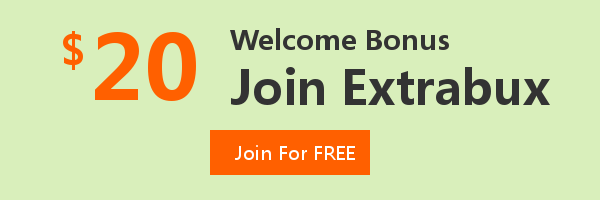
Extrabux is an international cashback shopping site, offering up to 30% cashback from 10,000+ Stores!
B&H Photo Video, Dyson, Woodland Direct, Ooni UK, Bed Bath and Beyond, TUSHY, Zoro, Anthropologie, 4seating.com, GDF Studio, simplehuman, Appliance Parts Pros, etc.
Join to get $20 welcome bonus now! (How does Welcome Bonus work?)
Recommendation
-
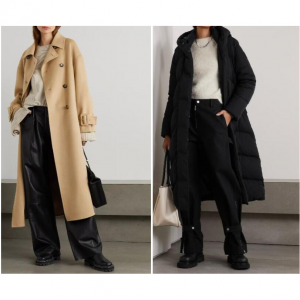
10 Best & Stylish Winter Coats for Women on NET-A-PORTER in 2024
-

Top & Best 12 Sneaker Apps/Websites for Raffles, Releases & Restocks in 2024
-

7 Best Gift Card Exchange Sites - Buy, Sell and Trade Discount Gift Card Safely and Instanly!
-

Top 9 Professional Skincare Brands for Licensed Estheticians 2024
-

13 Best Luxury Online Shopping Sites with Highest Cashback in 2024 (Coupon Code+Sale+14% Cashback)
Up to 14% Cashback!








